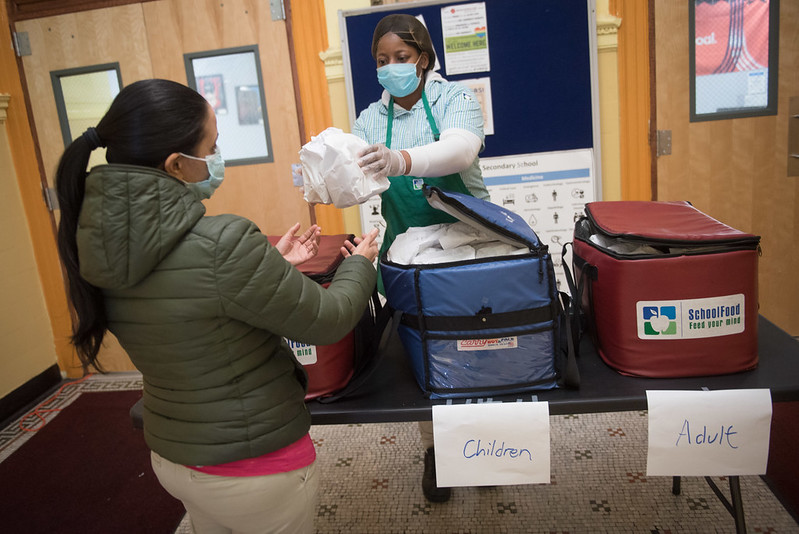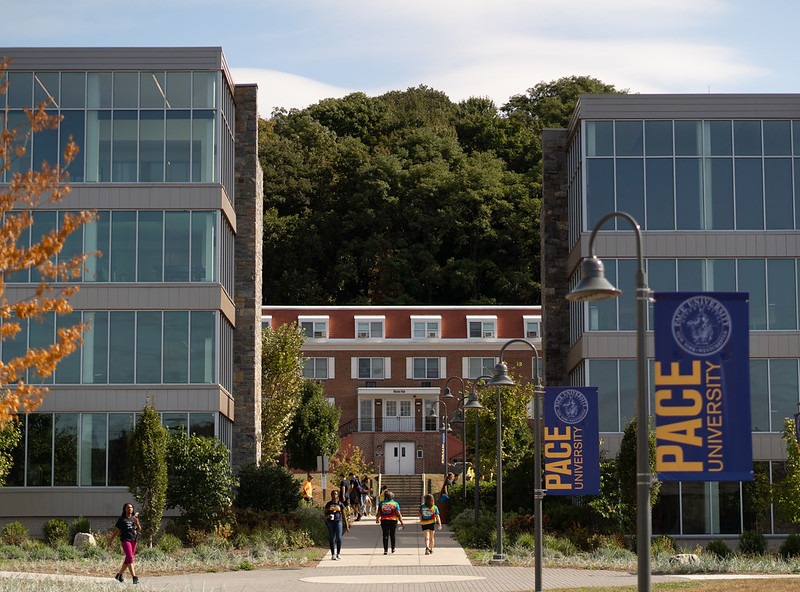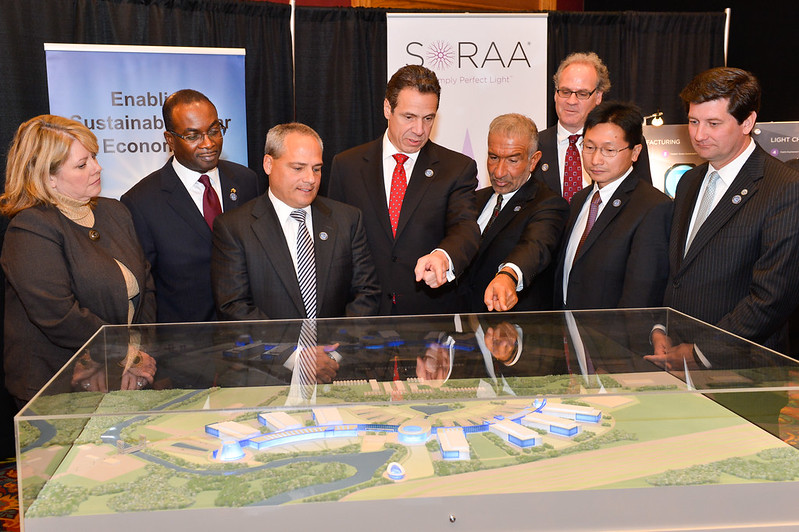Hunger is Still Here: Nourish New York Can Help

Free meals (photo: Michael Appleton/Mayoral Photography Office)
We are fast approaching the one-year mark of an incredibly tumultuous time, a year filled with hardship and uncertainty. There is neither a geographic corner of New York nor area of industry in our state that has escaped unscathed. As our economy has gone into a tailspin, food insecurity has skyrocketed. Food banks and pantries have emptied their shelves, and farms have been unable to sell their goods as supply lines have been disrupted. One of the most effective ways we have been able to address food insecurity statewide is through the immensely successful Nourish New York program.
The Nourish New York program was launched by Governor Cuomo in 2020 in order to address two separate, yet connected, issues. Due to decreased demand, disrupted and broken supply lines, and processing plant workers contracting the virus, upstate farmers were struggling to sell their products. Because wholesale consumers such as school districts and restaurants were closed, they no longer needed fresh produce, dairy and other items. At the same time, many people, some for the first time ever, were turning to food banks and pantries for assistance.
Social service providers, governmental agencies, houses of worship and non-profits, became completely overwhelmed. Food banks, which generally rely on donations, had to quickly shift funds towards purchasing food to meet demand, as the pandemic caused a decrease in institutional donors such as catering halls and restaurants, now shuttered due to pandemic.
The Nourish New York program connects regional agricultural producers with emergency food providers. New York farmers, many of whom were struggling before the pandemic hit, have been given a lifeline, as food banks receive state funds to purchase fresh produce, dairy and meat from participating farmers at market rates, and then distribute that food to those in need.
Just as Nourish New York was a timely response to immediate need, the incredible work undertaken by organizations like Met Council, City Harvest, and the Farm Bureau cannot be understated. The coordination among hundreds of organizations and their volunteers to safely and efficiently implement the Nourish program was instrumental in its success.
The program has sustained over 4,000 farms and distributed over 17 million pounds of fresh food. With nearly 1 million New Yorkers out of work, supporting the agencies and providers that help ensure vulnerable families are fed is crucial. We not only need to continue funding this program, but we must dramatically expand its reach.
Currently funded at $25 million for the next year, this number must be doubled. Nourish New York is a win for both our farmers, who have been ravaged by the pandemic, and for New Yorkers who face daily food insecurity.
In our state, food insecurity is most prevalent in households with children. According to City Harvest, the number of children going hungry in New York City alone is 466,000 -- a nearly 50% increase over the past year. Childhood food insecurity is linked to increased risk of developmental issues, lower psychosocial function, school absence, aggression, anxiety, behavior disorders, depression, substance abuse, and difficulty concentrating. As an estimated one in four children is going hungry, parents are selflessly skipping meals so they can attempt to feed them. Adult family members are forced to make perilous choices among rent, utilities, medical care, and nourishment. The broader implications of food insecurity on adults also extends beyond nutritional deficiencies, with studies showing compounding detriments to overall mental health.
The Nourish New York program is also focused on improving food access to communities of color, which have taken the economic and physical brunt of this pandemic, by greatly increasing access to healthy foods. In the past year, we have seen local farmers’ market utilization increase by over 50% in historically underserved communities. Communities with dietary restrictions have also had a particularly difficult time finding resources, and the Nourish program has been able to secure food that meets their needs. Kosher, Halal, organic, and vegetarian options have all been added to this initiative.
Rebuilding a post-pandemic economy in New York State will require bipartisan creativity and fortitude. Nourish New York has proven to be a fiscally-responsible success in addressing food insecurity, assisting our farmers and connecting upstate and downstate economies. Many federal and state programs failed our community over the last year, preventing excluded and undocumented workers from accessing life saving services, but Nourish New York made no distinction and ensured that thousands of New Yorkers had food on the table. While we have taken steps towards addressing food insecurity during these unsettling times, the economic devastation caused by this pandemic is far from over. The Nourish New York program must be a part of the long-term planning of New York State.
***
Assemblymembers Daniel Rosenthal, chair of the Assembly Task Force on Food, Farm & Nutrition Policy, and Catalina Cruz, chair of the Assembly Task Force on New Americans, represent parts of Queens. On Twitter @DanRosenthalNYC & @CatalinaCruzNY.
***
Have an op-ed idea or submission for Gotham Gazette? Email This email address is being protected from spambots. You need JavaScript enabled to view it.
New York’s Colleges and Universities are Key to Its Revival

Pace University (photo: Pace University)
We knew our city never was or would be dead. Vaccines are here, restaurants have re-opened for indoor dining, and commercial life is returning. Apartment sales, rental volumes, and prices are back on the upswing. And throughout the downturn, major, forward-thinking employers like Facebook and TikTok signed giant new office leases in Manhattan.
But we still need to do everything we can to bring in the next generations of New Yorkers. And that means recognizing what an economic engine New York’s colleges and universities are for our city and state. We attract the young, ambitious, and diverse talent our city needs to restart and rebuild.
There were nearly 1 million undergraduates enrolled in New York’s colleges and universities in the last academic year, according to statistics from the state Education Department. More students travel to New York for college than to any other state, according to data from the Commission on Independent Colleges and Universities in New York. And these students are the people who will help rebuild New York and drive our future.
At Pace University, with campuses in Lower Manhattan and Westchester, we have a proud 115-year history of helping hard-working, ambitious young people to transform their lives through the power of a college education. Our student body of 13,600 undergraduate and graduate students—many of them the first in their families to attend college—come to Pace from 47 states and 99 countries.
New York’s private colleges and universities, Pace among them, generate $89 billion in economic impact annually, and support 415,600 jobs in the state, according to CICU. The sprawling SUNY system drives another $28.6 billion, according to a study by the Rockefeller Institute for Government. In total, that’s more than $117 billion in economic activity in our state attributable to higher education—more than one-and-a-half times the $74.6 billion output of the state’s manufacturing sector (per the National Association of Manufacturers).
In Washington, the new Biden administration is committed to supporting colleges and universities. President Biden has promised to expand the Pell grant program that provides government aid for low-income Americans. That’s an important and overdue change, as the size of those grants have not kept up with inflation. He wants to make federal loans easier for students and their families to navigate and less costly, both very welcome measures. And he has said he’ll expand student loan forgiveness for students who go into public service, which will help both students and our important public sector.
The relief package passed at the end of last year included some aid for higher education, and President Biden’s American Rescue Plan, currently being debated in Congress, promises more.
But colleges and universities are in a deep financial bind right now. Tuition revenue has fallen because of the pandemic, in some cases precipitously, and expenses for student, faculty and staff health and safety, including extensive testing protocols, have increased. Strapped state budgets aren’t able to fill the gap, and tuition increases are out of the question. We need more support from our government along with corporate partners to do our work effectively.
We’re doing our part by trimming budgets and looking for creative ways to help our dollars go further. We’re finding additional ways to reach our students and serve our communities, even through challenging times.
We play a crucial role in our regional economies. We bring in the next generation of workers, and we give them the skills they’ll need for the jobs of tomorrow. We incubate new ideas and develop new talent. We provide jobs and invest in our communities.
And now we’re turning to federal, state, and local partners for help. College and universities are key to maintaining the vibrant and ambitious economic landscape of New York. With the help of our partners, we’ll be an integral part of rebuilding it.
***
Marvin Krislov is the President of Pace University. On Twitter @PaceUniversity.
***
Have an op-ed idea or submission for Gotham Gazette? Email This email address is being protected from spambots. You need JavaScript enabled to view it.
6 Steps to End Taxpayer-Funded Corporate Welfare in New York

Gov. Cuomo at an economic development event (photo: governor's office)
New York State gives an estimated $4.4 billion a year to corporations to create jobs. Local governments give approximately $5.6 billion more, according to the Citizens Budget Commission. We do not know how much assistance each business gets, nor do we know how many jobs are created or retained. But we do know – as hundreds of studies have shown – that subsidizing corporations is fundamentally a waste of money that could be spent on core government services like transit or schools.
In 2018, Tim Bartik, an internationally prominent labor economist at the W.E. Upjohn Institute collated 30 studies that collectively show business subsidies sway business decisions at best 25% of the time. In his recent book “Incentives to Pander,” University of Texas political scientist Nathan Jensen spells out how politicians use corporate welfare for political gain, including soliciting campaign contributions. Jensen carefully shows that fiscal incentives are useless for the public, yet benefit pandering politicians.
In testimony this week to the State Legislature, my organization, Reinvent Albany, listed six steps the state can take to end wasteful corporate welfare in New York:
1. Hold an oversight hearing on business subsidies featuring independent experts.
The Legislature should hold an oversight hearing specifically about the effectiveness of business subsidies in New York state and invite independent experts from across the country. This would help cast light on the amount being spent on the subsidies, the lack of transparency, and the poor return on public investment. There is robust independent scholarship about tax abatements, subsidies for convention centers and stadiums, and other so-called “economic development” expenditures. New York should draw on that expertise instead of hearing mainly from hired guns who are paid by industries getting billions in taxpayer funds.
2. Establish a Database of Deals.
Stunningly, how much each business gets and how many jobs they create and retain is not disclosed to the public and may not be known by the state.
Since 2015, watchdog groups have called for a Database of Deals that reveals exactly how much each business is getting and what the people of New York are getting in return. The public started asking for the Database of Deals following huge scandals that led to the conviction of high-level state economic development officials.
Two years after Governor Cuomo directed Empire State Development to create a database, there is still no database. This is basic transparency. It is 2021 – enough waiting and excuses. The Legislature should reintroduce the legislation (S2815, Comrie/A2334, Schimminger) and require the database in law.
3. Pass the Opportunity Zone Tax Break Elimination Act in the budget.
Subsidies that start small often balloon into incredible costs, and this is why the Legislature must move to repeal New York’s Opportunity Zone tax break by passing the legislation (S1195, Gianaris/Dinowitz) to do so in the budget that’s due April 1. The bill has support from 19 organizations and six unions, including 1199SEIU, Communications Workers of America District 1, and the New York State Teachers Union. Citizens Budget Commission estimated that the Opportunity Zone tax break is costing New York City and State up to $31 million and $63 million respectively each year, with these numbers expected to rise to $140 million and $284 million in 2029.
Under the program, investors receive a tax break by investing their capital gains in so-called “Opportunity Zones,” which are high-poverty or low-income areas designated by states. Investors can defer paying taxes on their capital gains for up to seven years and are excluded from paying taxes on gains from their investments if investing for ten years.
Though supposedly intended to revitalize communities, Opportunity Zones are in fact a massive giveaway to real estate and wealthy investors that will cost New York billions. Little research has been conducted on the program, but the one major study to date found that Opportunity Zones’ key beneficiary is high-end real estate, not communities. Extensive research on Opportunity Zones’ forerunner, Enterprise Zones, shows that tax breaks for private investment in high-poverty areas does little other than hurt tax revenue.
4. End $330 million a year in oil and gas subsidies.
The Legislature should pass in the budget the legislation (S4816, Krueger) that would end some state subsidies for airline fuel ($118 million), liquid petroleum gases ($57.6 million) and fracked gas infrastructure ($4 million), and more. Eliminating the subsidies could collectively save the state $330 million a year – more than the state projects to bring in by legalizing marijuana.
As we have noted, New York is currently trying to reduce fossil fuel pollution while subsidizing the very companies that contribute to global warming. It makes absolutely no sense to both tax and subsidize fossil fuels.
5. Increase funding of the Authorities Budget Office (ABO), a crucial subsidy watchdog, to over $3 million.
The Legislature must increase the ABO’s budget to $3.105 million, as we and other watchdogs requested back in 2018. The ABO oversees 585 state and local authorities that together hold $248 billion in public debt, but the office has only 11 employees as of last year. This skeleton crew is far from what was imagined when the ABO was first established.
6. Reduce the number of Industrial Development Agencies (IDAs) and Local Development Corporations (LDCs) and make them more accountable.
Public authorities such as IDAs and LDCs spend massive amounts of public funds, and there is little transparency on whether or not IDA and LDC economic development subsidies help communities. Most spending decisions take place outside of the state budget process. We view this as a major corruption risk and waste of public funds.
The Legislature should embrace the recommendations made in the State Senate Investigation and Government Operations Committee’s 2019 report, such as permitting County Comptrollers to audit IDAs and preventing projects already underway from receiving assistance. These steps would go a long way toward reducing the number of public authorities and increasing transparency.
The state cannot continue dragging its feet – New York’s subsidies have exploded over the past decade, and we are now estimated to be losing about $10 billion in tax expenditures annually. Every year we delay is another year that $10 billion for public services disappears.
***
Tom Speaker is a policy analyst at Reinvent Albany. On Twitter @ReinventAlbany.
***
Have an op-ed idea or submission for Gotham Gazette? Email This email address is being protected from spambots. You need JavaScript enabled to view it.




